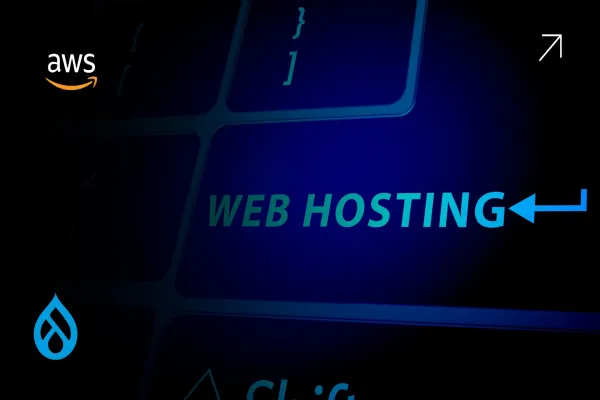Enterprise CIOs are under increasing pressure to control cloud costs without slowing down innovation. For many of them, the conversation is starting to shift- from “How do we scale on AWS?” to “Why are we spending so much scaling the wrong way?” Nowhere is this more evident than in Drupal deployments on AWS.
Drupal is a powerful platform for digital content and engagement. AWS offers the flexibility to scale it globally. But that combination, if not carefully managed, becomes a silent drain. What was meant to be a future-proof setup often ends up riddled with waste, redundancy, and complexity that no longer serve the business.
Today, CIOs are taking a hard look at their infrastructure decisions and asking the right question: Are we building Drupal platforms for speed, or sustainability?
Why AWS Costs Spiral for Drupal Without Visibility
Drupal workloads are inherently dynamic. Page views spike during campaigns, APIs get hit hard during product launches, and content updates run heavy backend processes. But most AWS configurations treat Drupal like any other static app—provisioned based on assumptions, not data.
Over time, the following patterns emerge:
Applications are hosted on oversized EC2s that run idle most of the time. RDS databases are provisioned with maxed-out IOPS that aren’t used. Media assets on S3 pile up without lifecycle rules. And multiple staging environments run 24/7 without business justification.
Each of these adds up. The cost is not just in dollars but in opportunity. Every dollar over-spent on infra is a dollar not spent on product innovation, performance optimization, or user experience.
CIOs Are Now Demanding Value Alignment
Cloud cost optimization isn’t new. What’s changed is the urgency. With budget scrutiny at an all-time high, CIOs want cloud architectures that are lean, observable, and scalable, with clear lines between cost and business value.
That’s why traditional AWS consulting is no longer enough. CIOs now seek partners who understand Drupal deeply and who can optimize at the CMS level, not just at the infrastructure layer.
What Smart CIOs Are Doing Differently Now
The most forward-thinking CIOs are restructuring their AWS strategy for Drupal platforms around four principles.
First, they’re prioritizing auto-scaling and elasticity. Instead of fixed EC2 setups, they deploy scalable groups that grow and shrink with actual usage patterns, especially in public-facing content environments.
Second, they’re applying resource visibility down to the Drupal level. That means monitoring which Views are generating heavy queries, which cron jobs are ballooning RDS usage, and which modules are dragging performance.
Third, they’re replacing complex AWS add-ons with Drupal-native tools. Instead of Elasticsearch, they deploy Solr with tight Drupal integration. Instead of Redshift, they extract usage data directly from the app layer or use Athena with S3 logs.
And finally, they’re embracing governed non-prod environments. Dev and test stacks are spun up on schedule and spun down when not needed. Admin interfaces aren’t routed through CDNs. Load balancers aren’t replicated across six environments “just in case.”
The Shift from Scaling to Streamlining
The narrative used to be about scale; how big, how fast, how global. But as enterprise Drupal sites mature, the conversation is shifting to streamlining. CIOs want fewer moving parts, tighter governance, and configurations that reflect actual business usage.
It’s no longer acceptable to have DevOps teams “guesstimate” infrastructure or rely on brute force provisioning. Decisions now need to be data-backed, cost-conscious, and directly tied to platform KPIs like load times, uptime, and user engagement.
In the Drupal + AWS world, that means building smarter. It means eliminating the bloat and getting back to what the cloud was supposed to be in the first place- flexible, efficient, and accountable.
What This Means for Enterprise Teams
For enterprise digital teams, this shift comes with a call to action. Cost optimization is not just an infra task. It’s a cross-functional responsibility that includes developers, product owners, and IT leadership. The Drupal application layer needs just as much scrutiny as the AWS billing dashboard.
Valuebound is helping CIOs navigate this shift with precision. We specialize in auditing Drupal workloads on AWS; not just by looking at EC2 usage or RDS graphs, but by correlating infrastructure costs with real CMS behaviors. That’s how waste gets eliminated, performance goes up, and budgets unlock room for innovation.





